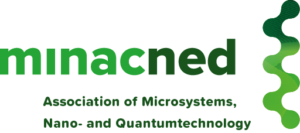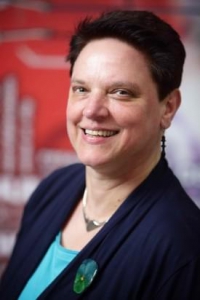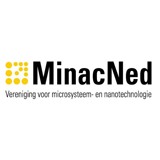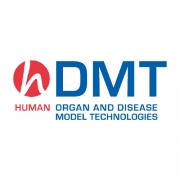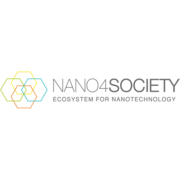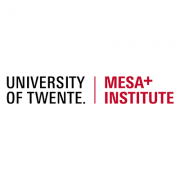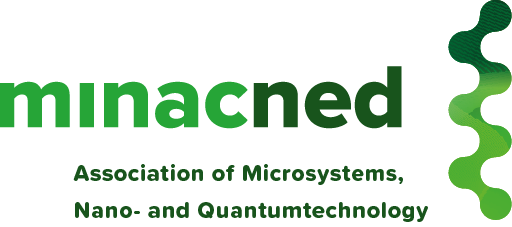Onderzoekers van de Technische Universiteit Eindhoven en het Radboudumc hebben verschillende botcellen met elkaar verweven tot een ‘organoid’ die zelfstandig nieuw, hard botweefsel kan maken. Het is het meest complete 3D-model van botvorming tot nu toe. Het 3D-model maakt het mogelijk de belangrijkste biochemische processen in ongekend detail te bestuderen en zou kunnen helpen bij het ontrafelen van de vele mysteries rond botvorming. Bovendien is het in het laboratorium gekweekte bot bijzonder geschikt voor het testen en ontwerpen van nieuwe behandelingen voor botziekten zoals osteoporose of osteogenesis imperfecta.
Stel je voor dat je stamcellen uit je beenmerg gebruikt om een nieuw stukje botweefsel in het laboratorium te laten groeien, waarna artsen onderzoeken hoe bepaalde medicijnen je botweefsel beïnvloeden. Op deze manier kan er voor u, en eventueel voor iedereen, een behandelplan op maat gemaakt worden. Welkom in de wereld van gepersonaliseerde geneeskunde.
Deze visie op medicijnontwikkeling is geen sciencefiction meer nu onderzoekers van de Technische Universiteit Eindhoven en het Radboudumc het eerste deel daadwerkelijk hebben gerealiseerd: het kweken van een levensecht stukje botweefsel uit menselijke stamcellen. Het is de eerste organoid van bot, een vereenvoudigde versie van het oorspronkelijke bot, en de onderzoekers rapporteren er vandaag over in de journal Advanced Functional Materials.
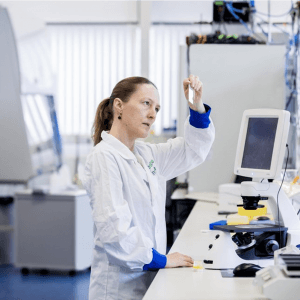
Sandra Hofmann: “We show that we can make lifelike bone exclusively with two cell types.” Image: Vincent van den Hoogen
SAMENHANGEND BEELD
“Hiermee geven we voor het eerst het volledige beeld van de botvorming in een vroeg stadium”, zegt Sandra Hofmann, universitair hoofddocent Bioengineering Bot van de TU / e. En dit is van groot belang, vooral omdat het proces waardoor botten ontstaan nog grotendeels een mysterie is. Bot is een zeer complex materiaal waarin enerzijds talloze cellen en processen op elkaar inwerken en anderzijds een ingenieuze matrix van collageen en mineraal wordt opgebouwd om materiaalsterkte te geven. Over de afzonderlijke componenten is veel bekend, maar een samenhangend beeld ontbrak tot nu toe.
Drie soorten cellen spelen de hoofdrol bij botvorming: osteoblasten (die botweefsel opbouwen), osteoclasten (die bot wegnemen) en osteocyten (die de opbouw en afbraak van bot reguleren). “De meeste onderzoeken hebben zich tot nu toe gericht op een van deze celtypen, maar dat is geen goede weergave van het echte weefsel”, zegt Hofmann. “We presenteren hier een stuk geweven bot (bot in een vroeg stadium) dat is ontstaan uit stamcellen en twee soorten botcellen bevat: osteoblasten en osteocyten. We zien nu dat we alleen met deze twee celtypen levensecht bot kunnen maken.”
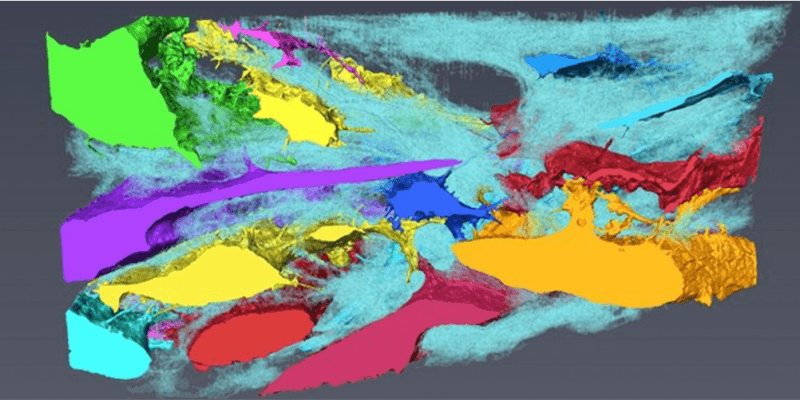
Een klein deel van de botorganoïde, gereconstrueerd met 3D-elektronenmicroscopie. De kleuren geven verschillende cellen aan die zijn verbonden om het osteocytnetwerk te vormen, ingebed in de collageenmatrix (cyaan).
WIJZER WORDEN VAN MOLECULAR POKING
“En misschien nog wel belangrijker: ons systeem gedraagt zich net als bot in een vroeg stadium”, zegt Anat Akiva, universitair docent Celbiologie aan het Radboudumc. “We laten zien dat beide typen cellen de eiwitten produceren die de cellen nodig hebben voor hun functionaliteit, en we laten met het grootste detail zien dat de matrix eigenlijk de botmatrix is die we in echt weefsel zien.”
Dat een vereenvoudigde weergave van botvorming op moleculair niveau nu mogelijk is, biedt volgens de onderzoekers ongekende mogelijkheden. “Een bot bestaat voor 99% uit collageen en mineralen, maar er is ook nog eens 1% eiwitten die essentieel zijn voor een succesvolle botvorming”, legt hoogleraar Nico Sommerdijk van Radboudumc uit. “Dus wat is de rol van deze eiwitten? Hoe ondersteunen ze botvorming? Nooit eerder hebben we de mijlpalen van dit proces op moleculair niveau kunnen bekijken.”
En daarmee hebben ze meteen een mooi startpunt om de oorzaak van genetische botziekten als ‘broze botziekte’ en hun mogelijke behandelingen te onderzoeken. “Onthoud dat de oorsprong van veel ziekten op moleculair niveau ligt – en dat geldt ook voor de behandeling”, zegt Akiva. “In feite hebben we nu een eenvoudig systeem in een betrouwbare omgeving waar we kunnen rondneuzen en zien wat er gebeurt.”
REFERENCE
Anat Akiva et al., An Organoid for Woven Bone, Advanced Functional Materials (9 March 2021). DOI:10.1002/adfm.202010524
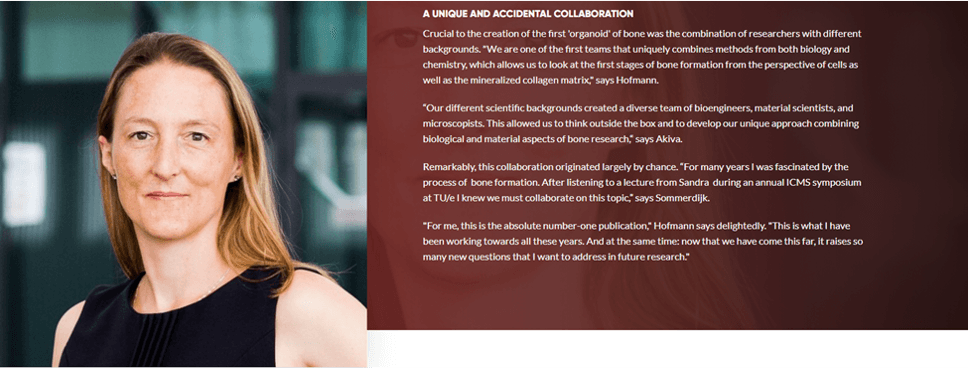
Bron: hDMT Technology news
